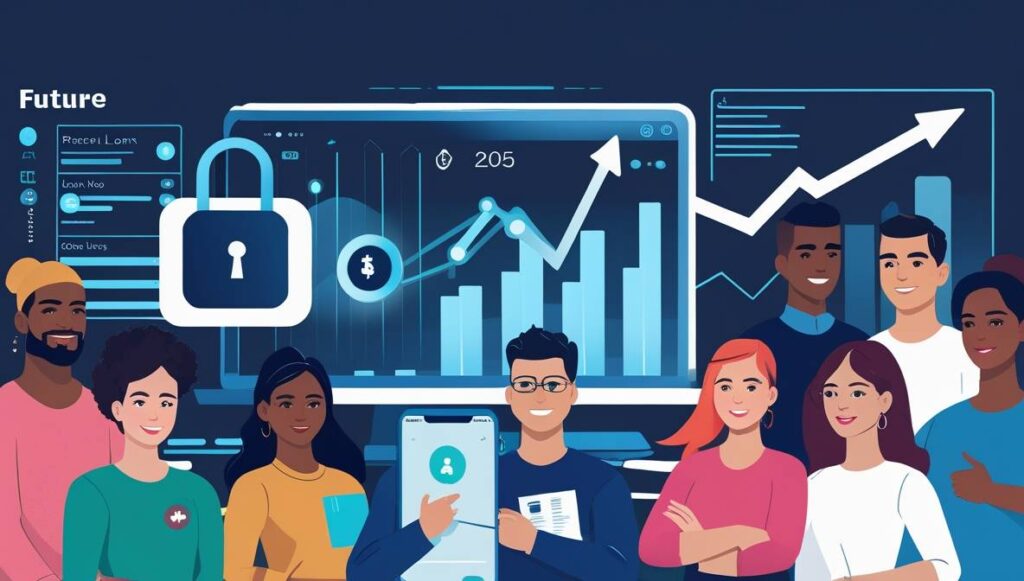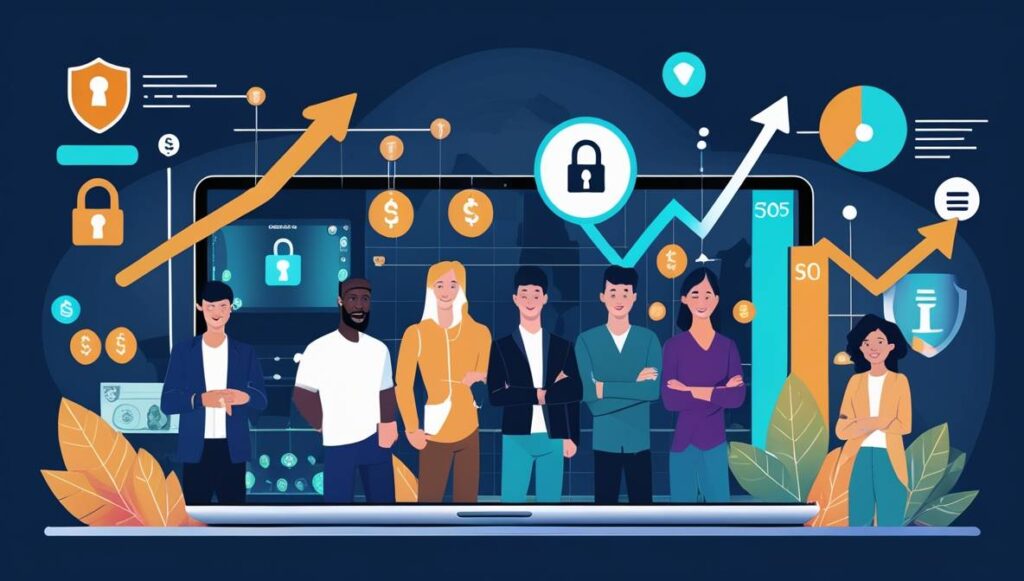Personal loans have become a vital financial tool for millions, offering flexibility to consolidate debt, fund major purchases, or cover unexpected expenses. As we move through 2025, the personal loan market is evolving rapidly, shaped by technological advancements, economic conditions, and shifting consumer preferences. With total personal loan debt reaching $251 billion and 24.5 million Americans holding such loans, understanding the trends and predictions for 2025 is essential for borrowers and lenders alike LendingTree.
This article explores the key developments driving the personal loan landscape, from interest rate forecasts to digital transformation and global perspectives.
Growth in Personal Loan Debt
The personal loan market has experienced significant growth, with outstanding balances reaching record levels. As of December 2024, U.S. personal loan debt totaled $249 billion, a 64% increase over the past five years U.S. News. By March 2025, this figure rose to $251 billion, with 24.5 million Americans holding personal loans, averaging $10,245 per borrower LendingTree.

Several factors contribute to this surge. Rising credit card debt, with average APRs at 24.20% in March 2025, has driven many to use personal loans for debt consolidation, which offers lower rates and fixed payments LendingTree. Additionally, personal loans are increasingly used for non-emergency purposes, such as home improvements, business startups, weddings, and vacations. The accessibility of digital lending platforms, which can process applications in 24-48 hours, has further fueled demand Bankrate.
| Metric | 2024 Q4 | 2025 Q1 |
|---|---|---|
| Total Personal Loan Debt | $249B | $251B |
| Number of Borrowers | 24.2M | 24.5M |
| Average Debt per Borrower | $11,652 | $10,245 |
Interest Rate Trends
Interest rates significantly influence the cost and appeal of personal loans. In 2024, rates fluctuated, starting at 11.93%, peaking at 12.43% in October, and ending at 12.29% Bankrate. As of June 2025, the average personal loan rate is 12.65%, with rates as low as 6.49% for borrowers with excellent credit Bankrate.
For 2025, experts anticipate stable or slightly lower rates, influenced by two forecasted Federal Reserve rate cuts following three in 2024 Bankrate. However, significant reductions are unlikely early in the year, as the Federal Open Market Committee held rates steady in January 2025. Borrowers with strong credit may benefit from competitive rates, particularly from credit unions, which offer lower APRs (e.g., 10.89% for a 36-month loan) compared to banks (11.94%) U.S. News.
Personal loans remain a cost-effective alternative to credit cards, which carry APRs above 20%. This makes them ideal for debt consolidation, though borrowers should be cautious of fixed repayment schedules that may limit flexibility Bankrate.
| Credit Score Range | Average APR | Average Loan Amount |
|---|---|---|
| 720+ | 17.71% | $18,813 |
| 680-719 | 29.96% | $15,077 |
| 660-679 | 42.87% | $10,695 |
| 640-659 | 53.56% | $8,422 |
| 620-639 | 71.45% | $6,256 |
| 580-619 | 116.55% | $4,400 |
| 560-579 | 168.36% | $3,067 |
| <560 | 205.81% | $2,341 |
Digital Transformation in Lending
Digital lending platforms have transformed the personal loan industry, making loans faster and more accessible. Borrowers can now apply online and receive funds within 24-48 hours, a significant improvement over traditional banking processes Bankrate. This shift is driven by increased smartphone and internet access, particularly in underserved areas like rural regions in India Mint.

Security is a priority, with lenders implementing two-factor authentication, blockchain, and biometrics to protect against fraud Mint. These platforms also use data analytics to streamline credit assessments, enabling lenders to serve a wider audience, including those with limited credit histories.
Personalized Loan Products
Lenders are increasingly using AI and big data to offer tailored loan products. By analyzing spending patterns, income, and other financial data, they can customize loan terms, interest rates, and repayment schedules to suit individual needs Mint. This personalization enhances borrower satisfaction and affordability.
Alternative data sources, such as utility bills, rent payments, and social media activity, are also being used to assess creditworthiness, particularly for those with thin credit files. This approach promotes financial inclusion, allowing more people to access loans at competitive rates Mint.
Increased Credit Availability
The strong economic performance of 2024, with low recession risks, has led to greater credit availability for personal loans Bankrate. Lenders are expected to ease credit standards in 2025, enabling more borrowers to qualify. Personal loan originations rose from 5.1 million in Q3 2023 to 5.4 million in 2024, with total debt increasing by $8 billion Bankrate.
While this trend benefits borrowers, it also emphasizes the need for responsible borrowing. Overextending can lead to financial strain, as seen in South Africa, where a 14.5% increase in loan originations was accompanied by a 33.4% delinquency rate RCS Group.
Focus on Financial Literacy
With increased loan accessibility, financial literacy is more important than ever. Lenders are providing tools like EMI calculators and budgeting apps to help borrowers manage their loans responsibly Mint. Key tips include:
- Comparing interest rates across lenders.
- Paying EMIs on time to maintain a good credit score.
- Avoiding multiple simultaneous loans.
- Borrowing only for essential needs.
Defaulting on loans can harm credit scores, making future borrowing more difficult. Resources like credit score checks and loan management guides are invaluable for borrowers Mint.
Global Perspectives
Personal loan trends extend beyond the U.S. In South Africa, loan originations grew by 14.5% in Q3 2024, driven by economic pressures, but high delinquency rates (33.4%) highlight repayment challenges RCS Group. In India, digital platforms and data analytics are expanding access to customized loans, particularly in rural areas Mint. These global trends underscore the importance of balancing accessibility with responsible lending practices.
Conclusion
The personal loan market in 2025 is poised for continued growth, driven by digital innovation, personalized products, and increased credit availability. While stable interest rates and advanced technologies offer opportunities, borrowers must prioritize financial literacy to manage loans effectively. By staying informed and borrowing responsibly, individuals can leverage personal loans to achieve their financial goals.
For more insights on qualifying for a personal loan, check out How to Qualify for a Personal Loan. Explore other loan options at Loans You Should Know About in 2025 or learn about related financial products like Green Loans and Understanding Home Loans.

